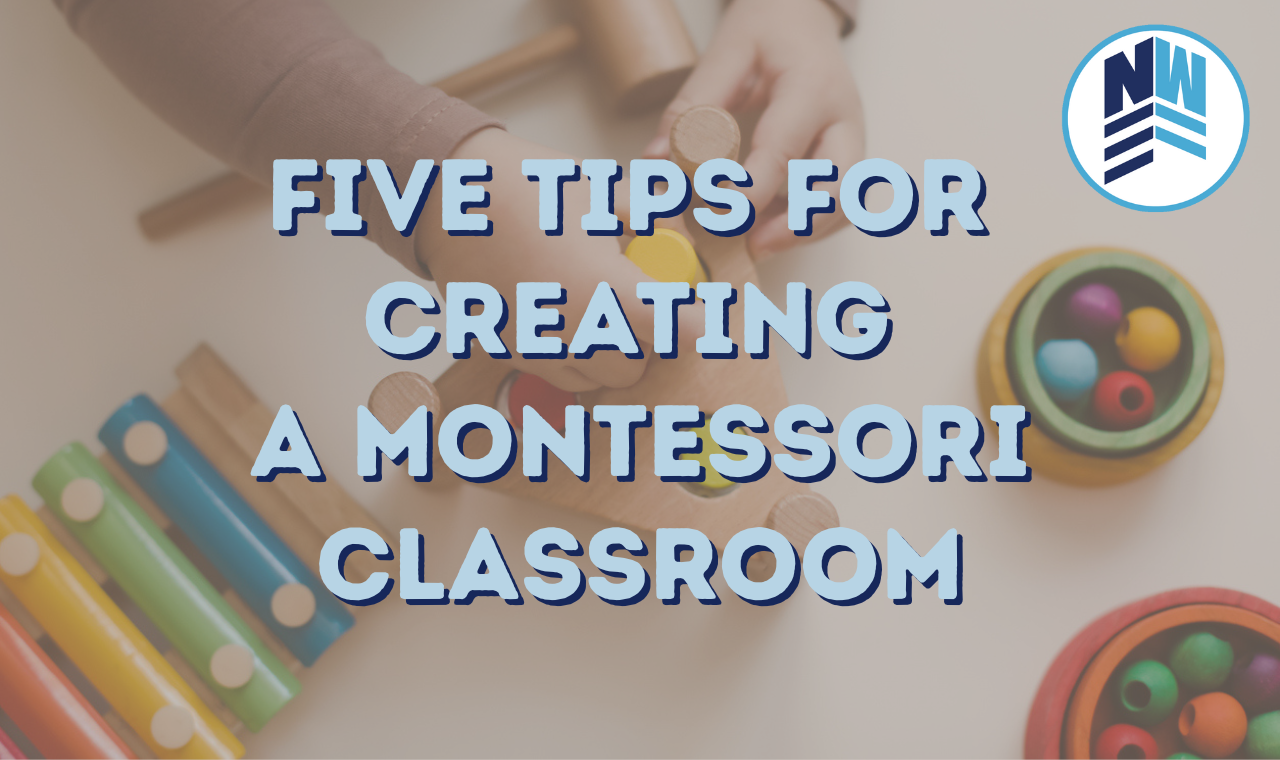
Five Tips for Creating A Montessori Space at Home
“Imagine your child’s eyes lighting up as they discover how to stack blocks just right or pour water without spilling. These moments aren’t just adorable—they’re milestones in their journey toward independence.”
-Play Smart Grow Smarter
When you step into the expansive world of homeschooling, you suddenly realize how diverse and limitless the homeschooling universe really is. It can quickly become very overwhelming!
When I began exploring how I wanted to educate my kids at home, I chose to use several methods combined to suit our family’s lifestyle and my kids’ personalities. One of the homeschooling styles I’ve begun to incorporate in some areas is the Montessori style of learning.
In my home state of Missouri, the legal homeschool year kicks off on July 1st. Like many families across the state, we’re busily preparing to deepen our dive into our home education journey. While I haven’t embraced the full Montessori homeschooling style, I have carefully adopted certain aspects of the Montessori philosophy. As our school year begins, I’ve begun refining our version of the Montessori setup—creating a space that’s calm, inviting, and geared toward hands-on exploration and independence.
If you’re new to the Montessori method or looking to refresh your homeschool, here’s a simple Montessori Home Checklist to help guide your planning. Whether you’re fully embracing a Montessori homeschooling lifestyle or choosing certain aspects of it (like me!), this article will offer some tips and resources to launch your family into your next year of exciting homeschooling possibilities!
Montessori Home Checklist
The beauty of Montessori is that it’s not about flashy gadgets or endless worksheets. It’s about setting up a thoughtful environment that empowers your child to learn naturally.
Play Smart Grow Smarter explores this idea. “Think about your home as a launchpad for growth. A low shelf with carefully chosen materials invites curiosity. A cozy reading nook sparks imagination. Even mealtime becomes a chance to practice motor skills.”
While Pinterest and TikTok can tend to overcomplicate the Montessori setup at home, your cozy homeschool nook doesn’t need to be magazine-perfect. While it’s an amazing and noteworthy accomplishment to curate such a beautiful space, many of us don’t have the resources to start out that way, and that’s ok, too!
Let’s look at some simple steps to begin our journey:
1.) Low Shelves with Curated Materials
Montessori encourages children to choose their own work. To support that independence, place educational materials on low, open shelves that your child can reach without help. The key is to keep it minimal and intentional—only a few items per shelf, rotated out regularly. (This can help minimize cost, too!)
Some great shelf items to consider:
- Wooden puzzles
- Counting beads or number rods
- Sandpaper letters
- Matching or classification cards and toys
- Practical life trays (pouring, spooning, etc.)
Montessori Services offers many of these materials at fair prices, and Etsy is a treasure trove of handmade, Montessori-inspired tools. Play Smart Grow Smarter offers a beautiful selection of toys, sorted by age for easy selection.
2.) Child-Sized Tools for Daily Tasks
Montessori isn’t just about academics—it’s about life skills. Provide tools sized for little hands to encourage responsibility and self-confidence.
Think:
- Small broom and dustpan
- Mini kitchen utensils
- Step stools for handwashing and food prep
- Child-sized gardening tools
Even toddlers can start helping with meal prep, watering plants, or folding towels. It’s all part of building independence.
For Small Hands is a go-to site for high-quality, child-sized tools specifically designed for Montessori families.
3.) Natural Light and Neutral Colors
Montessori spaces are calm, simple, and free of visual clutter. Choose neutral tones for walls and furniture, and let natural light flow into your space as much as possible. Avoid overly bright, flashy colors or character-themed decor.
This creates a peaceful atmosphere where the materials—not the decorations—are the main attraction.
Don’t worry if you don’t have a “perfect” room. Even small adjustments, such as decluttering a shelf or hanging a low mirror, can make a significant difference.
4.) Rotating Toys Every 2–3 Weeks
Less is more in Montessori. Instead of flooding your child with toys, rotate a few thoughtful items every couple of weeks. This keeps their interest fresh and helps avoid overwhelm.
For example:
- Week 1–2: Wooden stacking rings, shape sorter, knobbed cylinders
- Week 3–4: Object permanence box, nesting dolls, color tablets
You don’t need to buy constantly—rotate between toys you already own, or look for high-quality used materials on Facebook Marketplace or in local homeschool groups.
(Parent hack: rotating toys works for just regular life, too! I’ve rotated my kids’ toys out since they were babies, and it helps to keep our home uncluttered and heightens their interest in the current selection of toys!)
5.) Activities by Age: A Montessori Guide
One of the best parts of the Montessori method is how it aligns activities with developmental stages.
The team at Play Smart Grow Smarter has a helpful breakdown of Montessori-friendly activities by age that’s worth reviewing. Here are a few highlights from their blog post:
Infants (0–12 months):
Focus on sensory exploration:
- Black and white contrast cards
- Texture baskets
- Soft fabric balls or sensory scarves
“The goal for this age,” as the article notes, “is to stimulate the baby’s senses and support basic motor development.”
Toddlers (1–3 years):
Perfect age for practical life:
- Water pouring with small pitchers
- Transferring beans with a spoon
- Simple puzzles or knobbed cylinders
These activities promote fine motor skills, focus, and a sense of accomplishment. You can set up a tray for each task and rotate them regularly.
Preschool (3–6 years):
Now’s the time to dive into:
- Sandpaper letters and movable alphabet
- Number rods or bead chains
- Matching cards (animals, continents, etc.)
According to Play Smart Grow Smarter, children in this stage benefit most from materials that teach early literacy, numeracy, and geography through hands-on play. This is when your shelves will really start to shine!
If you’re building your collection, Monti Kids and Adena Montessori offer bundles curated by age group.
Your Homeschool Your Way
Montessori homeschooling doesn’t have to be complicated or expensive. At its core, it’s about encouraging your child to learn at their natural pace and offering them a beautiful environment to grow.
As you prepare for your homeschool year, take it one shelf at a time. Whether you’re starting with a few baskets on the floor or building out a full learning room, remember: You don’t need a perfect setup—you just need intention.
Here’s to a joyful, peaceful, and hands-on homeschool year ahead!




